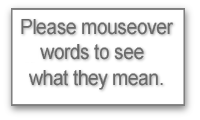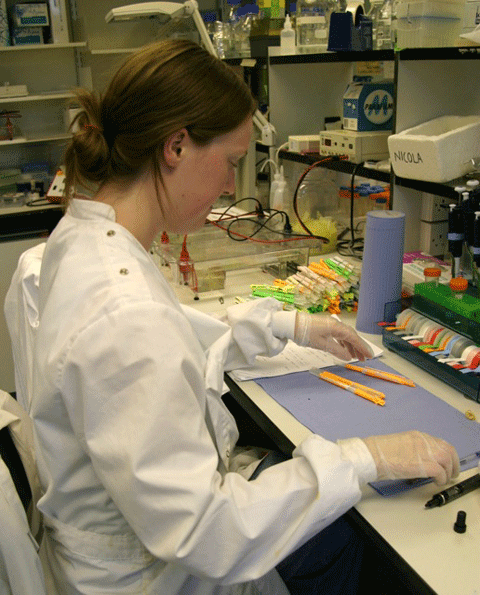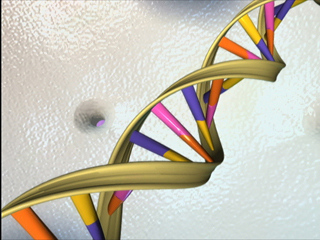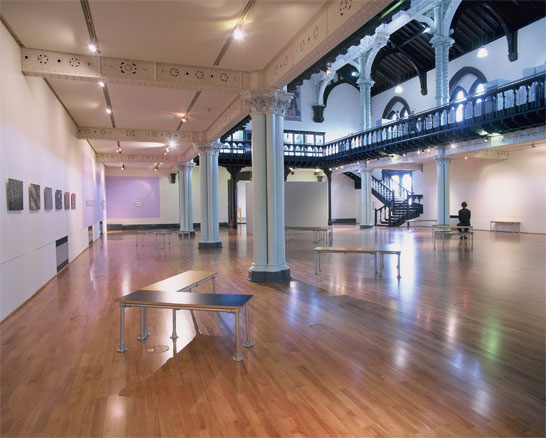Myotonic dystrophy
25-November-2010
Myotonic dystrophy
 Science and art can seem like complete opposites, the one rooted firmly in reality, the other limited only by the imagination. But artists and scientists can work very well together, says Glasgow University's Darren Monckton.
Science and art can seem like complete opposites, the one rooted firmly in reality, the other limited only by the imagination. But artists and scientists can work very well together, says Glasgow University's Darren Monckton.
"I have collaborated on a couple of projects with an artist called Jacqueline Donachie, whose family has an inherited disease called myotonic dystrophy. That is my area of research.
"We worked first on a project funded by the Wellcome Trust aimed at getting scientists and artists talking to each other. We went out and spoke to people who had the disease and we produced a book together."
In the second project they interviewed and filmed a number of scientists around the world. The aim was to make something that could be "seen and understood by many", says Professor Monckton, and to "provide a platform for shared knowledge and understanding about the scientific process, and the ethics and politics of genetic illness."
The outcome of that five-year collaboration was an exhibition at the Hunterian Art Gallery of photography, sculpture and a short film entitled Tomorrow belongs to me.
Anticipation
The subject of that exhibition – and of Professor Monckton's research – is myotonic dystrophy. This is one of a number of genetic diseases that behave in an unusual way, he says. "They exhibit something called anticipation."
What this means is that the symptoms of the disease appear at an earlier age, and become more serious, in each generation that inherits it. "The phenomenon appears in myotonic dystrophy, fragile X syndrome, Huntington's disease and other similar syndromes," he says.
For a long time anticipation couldn't be explained by geneticists. Many believed the earlier age of diagnosis wasn't caused by the disease itself, but by growing awareness of its symptoms within a family.
"But we now know that it is real. We understand the molecular explanation. It has to do with repeated DNA sequences. The more copies of these repeats you have, the worse the symptoms are. And the number of repeats increases from one generation to the next."
Jigsaw
So myotonic dystrophy gets worse with each generation that has the disease - it affects children more severely than their parents.
 It also gets steadily more severe as the sufferer gets older, explains Professor Monckton.
It also gets steadily more severe as the sufferer gets older, explains Professor Monckton.
"The simple explanation is that when you have these repeats the DNA no longer adopts the classic double helix. Instead it forms a new shape which the cell recognises and tries to repair. But instead it makes it worse. It goes round and round like that, getting worse each time."
A similar effect explains the progression of the disease in any one person, he says. "Everyone assumed it was a failure to repair the DNA. We now know the repair machinery needs to be there and working well. But there is still a lot we do not know.
For Professor Monckton this is the appeal of science. It's like a huge jigsaw puzzle, he says, but much more exciting. "You don't know what the picture is and you've only got half the pieces. You try to fit the pieces you do have together, guess the picture, then look for the missing pieces."
Progress is usually through fitting small new pieces to the puzzle,  he says. Occasionally pieces have to be pulled apart because they are in the wrong place. But every now and then a big new piece of the puzzle is fitted into place. It's those moments a scientist lives for, he says.
he says. Occasionally pieces have to be pulled apart because they are in the wrong place. But every now and then a big new piece of the puzzle is fitted into place. It's those moments a scientist lives for, he says.
Eureka
"You want an example? Well early in my career I was working in the lab that developed DNA fingerprinting at Leicester with Alex Jeffreys. One night when I was going to the theatre I suddenly had an insight and could hardly stay in my seat I was so desperate to get back to the lab to check that it was right.
"I've had two other real Eureka moments in my work." he smiles. "So far."
The appeal of working on a disease like myotonic dystrophy – rather than much more common diseases – is that the researchers are making considerable progress, he says. "It is a relatively simple genetic disease and it's tractable. There will still be people getting cancer in 30 years' time. But I firmly believe we will have a cure for myotonic dystrophy in my lifetime."
What's more it will be a cure that he will be able to understand – and so will other scientists, he says. "There's a big push now for systems biology. That's where you go out and generate vast amounts of data. Then you build a big computer model and use that to make predictions."
Science and systems
 So is this perhaps the real difference between science and art? Will science one day be done almost entirely by computers, robots and other machines?
So is this perhaps the real difference between science and art? Will science one day be done almost entirely by computers, robots and other machines?
A great deal of it certainly will, says Professor Monckton. "We are all brought up as reductionists. You break things into smaller and smaller pieces. Then you understand those and build it all up again."
But the last few years have shown us that biology in general and genetics in particular is more complicated than anyone imagined, he says. "There are a bazillion small pieces. To understand all those then build it back up again would simply take too long.
"So a lot of progress in future will be through bioinformatics. Robots will do experiments. Researchers will sit at computer screens running models and working on big collaborative projects."
For a moment he doesn't look enthralled by the prospect. Then he smiles again. "But I don't think that will be the whole of biology. I believe there will be a role for biologists doing experiments in the lab and out in the field, for a long time to come.
"As well as for small labs doing things one at a time and trying to understand the science. "
Words used in pop-ups
| cataract | cell | chronic | complex | conception | endocrine | DNA |
| engineering | full genome sequencing | gene | genome | gland | helix | hormone |
| information technology | inherit | lens | membrane | molecular biology | molecule | organ |
| progressing | protein | protoplasm | recurrent | reproductive | retrieve | semen |
| sequence | symptom | technique | telecommunications | tissue |
For other websites and resources relevant to this science story try the


